How Movies Can Nurture 9 Crucial Habits that Boost Empathy and Help Kids Thrive
Films can stir our emotions, spark our curiosity, creating lasting memories, and become portals to other worlds. In some cases, a movie can whip our conscience, shift our perspective, or activate our feelings so we stand up and change the world for the better. The right movie can stir a child’s empathy better than any lesson or lecture ever could. The right movie matched with the right child can also be the gateway to opening his heart to humanity. And the right films can also be teaching tools to help kids learn the nine essential empathy capacities culled from science that I identified in UnSelfie: Why Empathetic Kids Succeed in Our All-About Me World.
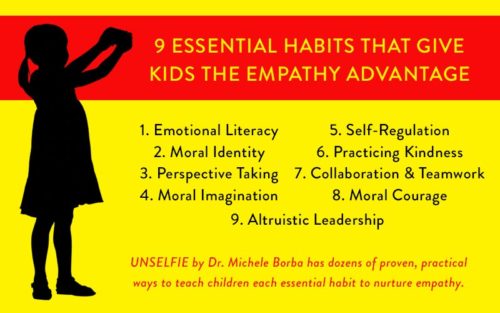
Here are over 100 wonderful movies that help teach those crucial nine empathy habits. Then refer to UnSelfie for over 300 follow-up activities to to give kids the Empathy Advantage.
You might also consider showing short You-Tube clip of the key scene from each film to depict the core moral message and empathy habit to discuss as a family.
Symbols designate the recommended age and suitability for each film: P-Preschoolers; S- School-age; T–Tweens/Teens.
Do view the film first to ensure suitability. Many of these movies are emotionally-charged so use your judgment.
Also check out websites such as Teach with Movies or Common Sense Media, which offer reviews and age-by-age child ratings of movies.
EMPATHY HABIT 1 – Emotional Literacy: Recognizing, understanding, & communicating feelings
Watching movies can be a fun way to help kids recognize emotions. Pick ones that depict different emotions and then identify characters’ emotions and how the child felt as the viewer.
Also, turn off the television sound for a few minutes and have kids try guessing together how the actors feel based on their body language or facial expressions. Nail biting can mean: “She’s tense!” A clenched jaw could signify “He’s scared!” Nodding and leaning in mean “She’s interested!”
Other movies in this resource for emotions are: Shrek, Dumbo, Despicable Me, Finding Nemo, Frozen, Harry Potter. And then there’s also Bambi as a real tear-jerker. Name the emotions as a family.
Inside Out (Pixar, 2015). The best giving important messages about needing to feel-and express-all of your emotions, whether happy or sad, told from perspective of an 11-year-old. P, S
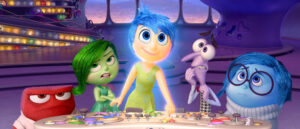
EMPATHY HABIT 2 – Moral Identity: Adopting & exercising an ethical code
Watch clips from Sully, then review Chesley Sullenberger’s childhood in UnSelfie (on pages 25-27) and how he formed a moral code. Discuss moral identity and help children create moral mantras. S, A
All the President’s Men (Warner Brothers, 1976). Real-life story of the two Washington Post reporters who followed their conscience and would not give up on covering the saga of the Watergate break-in. T
A Few Good Men (1992). Military lawyer defends Marines accused of murder. They content they were acting under orders. Show last scene on “true honor is inside.” T
A Man for All Seasons (1966). The story of Sir Thomas More and how he gives his life rather than lie about what he believes. T
Casablanca (1942). Yes, it’s dated but the moral lessons still apply as time goes by–especially last scene with Rick Blaine (Humphrey Bogart) and his decision: Lisa should stay with Laszlo. T
Labyrinth (1986). The struggle between good and evil and the lesson that words are powerful, life can change in an instant, and to be careful of what we wish for. S
Millions (2004). Ethics, being human, and moral identity all come to fore when two orphans find a bag of money, struggle with how they should use it, and learn what we are really made of. S
Norma Rae (1985). Powerful portrayal of a young woman who follows her conscience and in doing so makes a difference. T
October Sky (1999). True story about boy’s dream of becoming a rocket scientist and struggle with his “moral obligation” to work in the coal mines and remain with his family. S, T
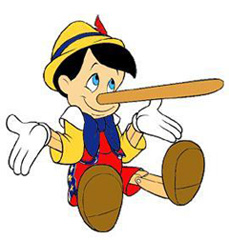 Pinocchio (1940). A rambunctious puppet longs to be a boy.His “conscience,” Jiminy Cricket, has a full time job. P,S
Pinocchio (1940). A rambunctious puppet longs to be a boy.His “conscience,” Jiminy Cricket, has a full time job. P,S
The Man Without a Face (1993). Former teacher disfigured in a car accident becomes feared in his town. A boy learns to judge by character, not appearance. S,T
The Nasty Girl (1990). Young German girl discovers that many community members aided Hitler and spends 10 years documenting the truth. S, T
The Ox-Bow Incident (1943). Two drifters come to a town in 1885. Rumor says they killed a popular rancher. Group takes law into own hands, hangs them, then discovers their innocence. T
Willy Wonka & the Chocolate Factory (1971). Trust, honesty, gratitude, moral identity: a grateful child repeatedly chooses to do the right thing!
EMPATHY HABIT 3 – Perspective Taking: Understanding others’ needs & walking in their shoes
In the Disney film Freaky Friday, a mom and daughter don’t get along. One day they mysteriously switch bodies, are forced to learn the other’s perspective. Here are films to discuss role taking and understand other people’s perspectives with kids.
An American Tail (1986). Little mouse gets separated from his immigrant Jewish family and wanders through New York meeting a series of multi-ethnic characters. P, S
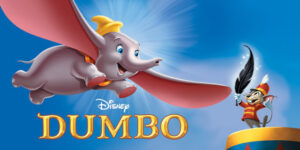
Dumbo (1941). This is a classic story of a lonely little elephant with over-sized ears who is unmercifully picked on. P
Follow the Drinking Gourd (1993). Story of the Underground Railroad: powerful introduction for young children about slavery & racial injustice. P, S
Ghosts of Mississippi (1996). Slain civil rights leader, Medgar Evers, and attempts of a white assistant D.A. to convict his killer during racially-charged times. T
Glory (1989). First black volunteer infantry unit in the Civil War and their white commander. Wonderful discussions about tolerance, anti-war, and conscience. S, T
Perfect Harmony (1991). Exclusive Southern boys school in the 1950s with two boys of different race who volley for the lead choir and encounter bigotry. S, T
Roll of Thunder, Hear My Cry (1992). Black Mississippi family’s struggle to keep their land and dignity during Depression through the eyes of a young black girl. S, T
The Blue and the Gray (1990). Civil War saga depicts how intolerance pits family against family in one of this country’s most tragic wars. T
The Defiant Ones, (1958). Two convicts–one black and one white–who are shackled together. The two must overcome their hostility to work together when they escape from a chain gang. T
The Elephant Man (1980). True story of a severely deformed man, who with the help of an empathetic doctor, moved from the freak shows into society. Beauty lies on the inside! T
The Grapes of Wrath (1940). John Steinbeck’s saga of the Joad family and their struggle to reestablish social justice. Conscience, compassion, loyalty, perseverance. T
The Long Walk Home (1989). Affluent white wife tries to make sense of why her struggling black maid would protest racial intolerance and support a bus boycott. T
To Kill a Mockingbird (1962). Film of unforgettable novel of a childhood in a sleepy Southern town and the crisis of injustice that rocked it. T
EMPATHY HABIT 4 – Moral Imagination: Using books, films or images to cultivate empathy
All films in this resource would help enhance the fourth empathy habit: Moral Imagination. Favorites such as The Shawshank Redemption, The Pursuit of Happyness, The Book Thief, or The King’s Speech can activate children’s hearts.
My favorite would be The Neverending Story, an epic story within a story about a lonely boy and a strange book that draws him into the beautiful but doomed world of Fantastica. As he’s drawn deeper into Fantastica, he must find the courage to face unspeakable foes and the mysteries of his own heart.
Why not initiate a regular Family Movie time? Some neighborhoods hold Summer Movie Nights: families take turns tacking a sheet outside, plugging in the DVD, spreading blankets on the lawn and showing a great flick such as The Blind Side, The Outsiders, E.T., The Extra-Terrestrial, or The Breakfast Club for the neighborhood kids to watch?
EMPATHY HABIT 5 – Self-Regulation: Keeping cool when feeling strong emotions
Anne of Green Gables (1985). Eight-year-old orphan’s struggles to cope with her unpredictable temper, find happiness, and change the lives of those she touches. S
Gandhi (1982). Chronicles Gandhi’s life from the prejudice he encounters as a young South African attorney and his cause of passive resistance and eventual assassination. T
Kundun (1997). Life of the 14th Dalai Lama, his pacifist views and the increasing difficulties he faces as a nonviolent man in an increasingly violent world. Great discussion opportunities. T
Places in the Heart (1984). A young widow determined to survive as a cotton farmer during the Depression. Compassion, self-reliance, perseverance, self-control. T
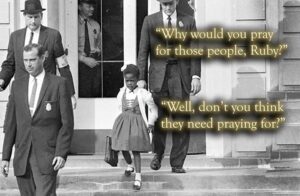
Ruby Bridges (1998). Six-year-old ordered by federal judges to be the only black child in an all-white school and led the cause of racial integration in the school system. I love this child! S, T
Rudy (1992). Despite amediocre academic record and athletic ability,a boy earns his goal of playing football at Notre Dame with a strong heart and grit. S,T
Shrek (2001) Don’t just a book by the cover: it’s what is inside that matters! Fun conversation about Ogres and self-control. P, S
The Karate Kid (1984). A teen struggling to find acceptance, encounters bullying, but discovers using your fists to handle problems gets you injured so he turns to martial arts. S, T
EMPATHY HABIT 6 – Practicing Kindness: Developing and exercising compassion
Two Miami moms worried that “cruel” was the new “cool” at the middle school, so they initiated Parent-Kid Movie Nights. Each month, parents and kids watched films like Mean Girls, Billy Elliot, Bully, or Cyberbully, and then discussed how kids can stick up for each other. Those talks helped switch the social scene so kids now think it’s cool to be kind. Try movie nights!
A Christmas Carol (1951). Miserly old man, Ebenezer Scrooge, finally discovers the virtues of giving and being kind. S
A Little Princess (1995). Young Sara faces a strict headmistress and overcomes hardship with courage and kindnes and changes the lives around her. S
Annie (1982). An orphan proves that money isn’t everything, anyone can make a different, and other people matter. (Sing out “It’s a Hard-Knock Life”!!) S
Babe (1995). Great empathy lessons: families can come in all shapes and sizes, stay true to yourself and stick up for others who are doing the same thing! P, S
Charlotte’s Web (1972). E.B. White’s classic about Charlotte, the spider great caring deed saves Wilbur the pig from the slaughter. P, S
Forrest Gump (1994). An intellectually-impaired man with a heart of gold. His heart is what transforms the lives of those around him. Character wins out over intellect. S, T
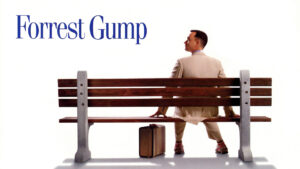
Pay It Forward (2000). A young boy attempts to make the world a better place after his teacher gives him that chance. Clip of how kindness pays it forward is powerful! T
Pollyanna (1960). Pollyanna finds the best in people and spreads “gladness” to an entire community is a glorious message about kindness. S
The Diary of Anne Frank (1959). Anne’s indomitable optimistic spirit and ability to find goodness despite horrendous circumstances. S, T
The Little Match Girl (1991). Hans Christian Andersen tale of a homeless little girl who nearly freezes to death but adopted by a mutt and saved by kindness. S

The Point (1971). Animated musical about a young boy who is rejected and isolated because his head is round and not pointed like everyone else’s. S
The Secret Garden (1987). Frances H. Burnett’s classic tale about an orphaned child who brings joy is a gloomy family. Sensitivity and empathy abound. S
The Velveteen Rabbit (1985). The animated Margery Williams classic of a little boy and a stuffed toy bunny learn the true meaning of love. P, S
EMPATHY HABIT 7 – Collaboration: Teamwork to think “Us,” not “Them”
A Bug’s Life (1998). A misfit ant, looking for “warriors” to save his colony for greedy grasshoppers, recruits a group of bugs that turn out to be an inept circus troupe. P, S
Antz (1998). A colony of complacent ants always doing what they’re trained to do until they learn that sometimes you must buck the system to do what you think is right. P, S
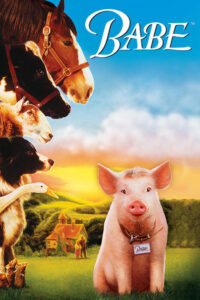 Babe (1995). The opening line of the film captures it’s essence: “This is a tale about an unprejudiced heart, and how it changed our valley forever.” May it spread. S
Babe (1995). The opening line of the film captures it’s essence: “This is a tale about an unprejudiced heart, and how it changed our valley forever.” May it spread. S
Beauty and the Beast (2017). A beautiful Belle offers herself to the ugly Beast in order to save her poor father’s life and discovers his wonderful kind heart. S, T
Frozen (2013). Encourages young women to support and stay loyal to each other. Kindness, loyalty and family love! P, S
Hidden Figures (2016). A team of female African-American mathematicians and their vital role in NASA during the U.S. space program’s early years and discrimination. Favorite line: “Here at NASA we all pee the same color.” And the restroom sign of desegregation is chopped down. What a message! T
Lady and the Tramp (1955). Lady, the classic spaniel, and Tramp, the downtown mutt, learn to be best buddies and accept others for what they are. P, S
McFarland, USA (2015). True story of 1987 cross-country team from a mainly Latino high school. Coach leads the team to win a state championship and turn his family’s perceptions around. S, T
Minions (2015) and Despicable Me (2010). Lighthearted, at time hilarious, the characters are in tune with each other even though they don’t speak a real language. P, S
Pearl Harbor (2001). A tale of war and friendship mixed in with history. Scene of Doolittle raid scene, Aleck Baldwin’s speech, and collaboration of U.S. troops is powerful. T
Pocahontas (1995). Friendship of Indian girl and Captain John Smith and how history changed as Native Americans and English settlers learned to live side by side. S
Remember the Titans (2000). True story of newly appointed African-American coach and his high school team on their first season as a racially integrated unit. Fabulous speech by the coach. T
The Rainbow Fish (1997). The Rainbow Fish has gorgeous scales. A fish asks for one, he refuses and finds his selfishness leaves him alone and sad. But don’t despair: there’s a lesson learned. P,S
The Sand Lot (1993). Great for boys and for instilling the message of teamwork, sportsmanship. S
The Sneetches (1960). Dr. Seuss birdlike creatures that look exactly alike except some have stars and some don’t. The stars create an “Us vs. Them” division. There are great moral lessons here. P, S
EMPATHY HABIT 8 – Moral Courage: Speaking up and doing what is right
We Bought a Zoo has a powerful scene in which the teen admits to his dad that he is crazy about a girl. But unless he musters courage to tell her, their relationship is over. His dad’s advice: “You know, sometimes all you need is twenty seconds of insane courage-just literally twenty seconds of just embarrassing bravery, and I promise you that something great will come of it.” Great advice!
Here are other films to help kids learn the power of courage and to speak up for others.
Brave (2012). A rebellious one is engaged to a prince wants to be anything but a “princess,” runs away to be “herself” and learns lessons of courage and grit along the way. P, S
Cinderella (2015) A refreshing remake of the animated original and a tribute to the old-fashion value of kindness. Best line: “Take courage and be kind.” P,S
Freedom Song (2000). Mississippi,1961 and the unsung small town citizens who risked their lives to stand up for justice and bring change at the grassroots . S, T
Hacksaw Ridge (2016). WWII Army Medic, Desmond T. Doss, refuses to kill people and becomes first in American history to receive Medal of Honor without firing a shot. Inspiring! T
Harry Potter (Every Harry Potter movie). “You were named for two headmasters of Hogwarts. One of them [Snape] was a Slytherin and he was probably the bravest man I ever knew.” S
Miracle of Midnight (2000). How one Danish family risked their lives in a remarkable effort to save thousands of Jewish countrymen the Holocaust. S, T
Pete’s Dragon (2016). A brave, orphan boy’s adventures and his best friend Elliott, who happens to be a dragon. There’s always a place for everyone! (And my son produced it!) P, S.
The Autobiography of Miss Jane Pittman (1974). Triumphs and tragedies of a fictional former slave. Taking sip from the “white only” drinking fountain and defying racism is the key scene! T
The Secret of NIMH (1982). Heartwarming story of how mother mouse’s grit, courage and love conquers enormous obstacles. And she must seek aid of a colony of rats to save her son. P, S
The Wizard of Oz (1939). After viewing discuss which-courage, intellect, and heart-do your kids feel is most important in leading a good and decent life. P, S
Twelve Angry Men (1957). Henry Fonda portrays the voice of conscience and courage as foreman to a jury who want a quick verdict against an innocent boy on trial. T
EMPATHY HABIT 9 – Altruistic Change-Making: Making a positive difference
A Brave Heart: The Lizzie Velasquez Story (2015). Fabulous role model urges kids to stand up to bullies. S, T
Au Revoir, Les Enfants (1987). True story of 11-year-old in Nazi-occupied France who discovers three classmates are Jewish and hiding from the Nazis and shelters them. T
Dunkirk (2017). Allied soldiers in are surrounded by the German army and evacuated during a field battle in World War II by civilians. Collaboration, Altruism, Empathy! Humanity! I dare you to watch this one and not get teary eyed. T
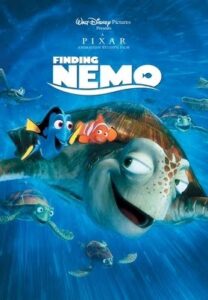 Finding Nemo (2003). Nemo is separated from his father. The scene in which the fish in the tank decide to help Nemo (sacrificing their freedom) is a powerful display of altruism. And Nemo returns to set them free. P, S
Finding Nemo (2003). Nemo is separated from his father. The scene in which the fish in the tank decide to help Nemo (sacrificing their freedom) is a powerful display of altruism. And Nemo returns to set them free. P, S
Free Willy: Escape from Pirate’s Cove (2009). A young girl befriends a stranded baby orca park and does everything to see him get back to his pod. Protecting wildlife. S
He Named Me Malala (2015). Inspiring documentary on an extraordinary brave teen social activist and youngest Nobel Prize winner, Malala Yousafzai. S, T
Hotel Rwanda (2004). True story of a Hutu, who in midst of a genocide of the Tutsis, hides them in his hotel. His compassion and empathy for his fellow Rwandan’s saves their lives. When I was working in Rwanda, I stayed in the hotel next to this one — it still gives me goose bumps. The power of one! T
Schindler’s List (1993). An immense message that kindness of can change the world. Oskar Schindler saved over 1100 Jewish lives in World War II. T
The Dark Crystal (1982). On another planet in the distant past, a Gelfling embarks on a quest to find the missing shard of a magical crystal, and so restore order to his world. S
The Hurricane (1999). Wrongfully accused of murder, boxer Rubin “Hurricane” Carter writes his story from prison. An alienated youth mounts campaign to get him released. T
The Rescuers (1997). Two mice work for the Rescue Aid Society and rescue children in trouble throughout the world. P, S
I know I’ve missed many other fabulous movies, so please use ones that you think would resonate with your children or students. Today’s digital natives are drawn to a digital world. Using the right film clips can create fabulous discussions about character and activate their empathy. Once you find a film that works, please pass it on to another caring adult. Let’s help our children think WE, not ME.
Join the #UnSelfie Revolution to Raise Kids Who Think WE, Not ME
Dr. Michele Borba
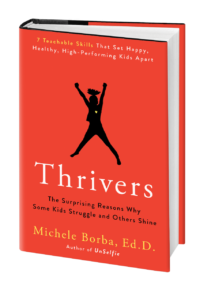 Our children need a revised skill-set to handle our uncertain world. Thrivers: The Surprising Reasons Why Some Kids Struggle and Others Shine (March 2021) explains why the old markers of accomplishment (grades, test scores) are no longer reliable predictors of success in the 21st century — and offers 7 teachable traits that boost resilience and will safeguard our kids for the future.
Our children need a revised skill-set to handle our uncertain world. Thrivers: The Surprising Reasons Why Some Kids Struggle and Others Shine (March 2021) explains why the old markers of accomplishment (grades, test scores) are no longer reliable predictors of success in the 21st century — and offers 7 teachable traits that boost resilience and will safeguard our kids for the future.
Also check out: UnSelfie: Why Empathetic Kids Succeed in Our All-About-Me World. You’ll find dozens (over 300) simple, proven ways to cultivate empathy in children as well as help them learn the nine essential habits that nurture empathy. The book is now in hardback as well as paperback and Kindle.
Follow me on Twitter @MicheleBorba or on my website MicheleBorba.com for over 500 blogs on character, empathy building and raising resilient children as well as how to contact me for speaking.


